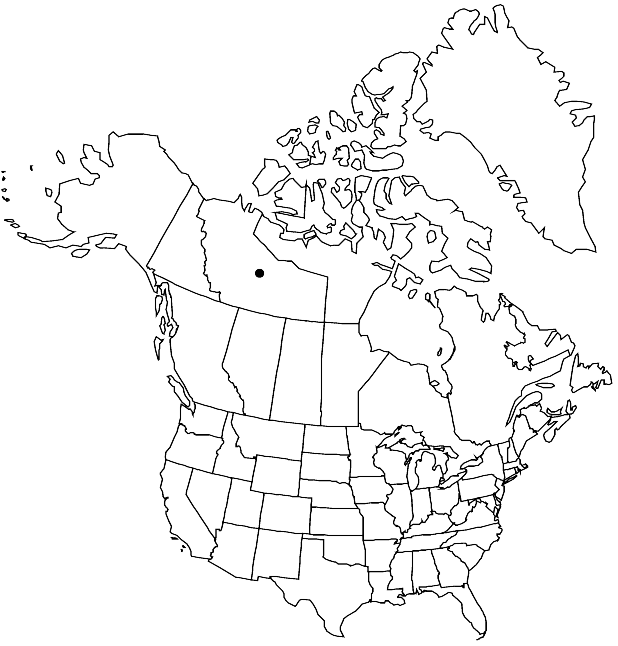Difference between revisions of "Braya pilosa"
Fl. Bor.-Amer. 1: 65, plate 17A. 1830.
FNA>Volume Importer |
imported>Volume Importer |
||
| (3 intermediate revisions by 2 users not shown) | |||
| Line 6: | Line 6: | ||
|place=1: 65, plate 17A. 1830 | |place=1: 65, plate 17A. 1830 | ||
|year=1830 | |year=1830 | ||
| + | }} | ||
| + | |special_status={{Treatment/ID/Special_status | ||
| + | |code=E | ||
| + | |label=Endemic | ||
| + | }}{{Treatment/ID/Special_status | ||
| + | |code=C | ||
| + | |label=Conservation concern | ||
}} | }} | ||
|basionyms= | |basionyms= | ||
| Line 11: | Line 18: | ||
|name=Braya purpurascens subsp. pilosa | |name=Braya purpurascens subsp. pilosa | ||
|authority=(Hooker) Hultén | |authority=(Hooker) Hultén | ||
| + | |rank=subspecies | ||
}} | }} | ||
|hierarchy=Brassicaceae;Brassicaceae tribe Euclidieae;Braya;Braya pilosa | |hierarchy=Brassicaceae;Brassicaceae tribe Euclidieae;Braya;Braya pilosa | ||
| Line 39: | Line 47: | ||
-->{{#Taxon: | -->{{#Taxon: | ||
name=Braya pilosa | name=Braya pilosa | ||
| − | |||
|authority=Hooker | |authority=Hooker | ||
|rank=species | |rank=species | ||
| Line 53: | Line 60: | ||
|publication title=Fl. Bor.-Amer. | |publication title=Fl. Bor.-Amer. | ||
|publication year=1830 | |publication year=1830 | ||
| − | |special status= | + | |special status=Endemic;Conservation concern |
| − | |source xml=https:// | + | |source xml=https://bitbucket.org/aafc-mbb/fna-data-curation/src/2e0870ddd59836b60bcf96646a41e87ea5a5943a/coarse_grained_fna_xml/V7/V7_881.xml |
|tribe=Brassicaceae tribe Euclidieae | |tribe=Brassicaceae tribe Euclidieae | ||
|genus=Braya | |genus=Braya | ||
Latest revision as of 23:36, 5 November 2020
Plants scapose; moderately to densely lanate-pilose, trichomes simple and 2-forked. Stems simple or few to several from base, erect to ascending, (branched or unbranched), 0.4–1.1(–1.3) dm. Basal leaves: blade linear-spatulate, 0.7–2(–3) cm × 0.7–2.5(–3.5) mm, base (membranous), broadly expanded near point of attachment, margins entire, (ciliate, trichomes long, simple), apex obtuse, often with tuft of hairs. Cauline leaves: 0 or 1 (or a leaflike bract subtending proximalmost pedicel). Fruiting pedicels divaricate to erect, (1–)2.5–6 mm. Flowers: sepals 2.8–3.5 × (1.3–)1.6–2.5 mm; petals white, (obovate), 4.7–6.6 × 3–5.1 mm, (claw short, apex rounded); filaments 2–3 mm; anthers ovoid, 0.4–0.6 mm. Fruits ovoid or globose, not torulose, (0.4–)0.5–0.6 cm × (2.5–)3–4 mm; valves densely to moderately pubescent, trichomes relatively short, simple and 2-forked; septum margin not expanded, or not basally; ovules 14–20 per ovary; style 1.2–2(–2.5) mm; stigma (broadly expanded), strongly or weakly 2-lobed. Seeds biseriate, oblong, 0.7–0.9 × 0.4–0.6 mm.
Phenology: Flowering Jul–Aug.
Habitat: Sandy, calcareous seashores
Elevation: 0-10 m
Discussion
Of conservation concern.
Braya pilosa is distinguished from other members of the genus by a combination of large flowers, broad fruits, and exceptionally long styles. This striking Braya was known from only three pre-1850 collections until the type locality near Cape Bathurst in the Northwest Territories was rediscovered in 2004. The species is apparently restricted to the type locality, where it is found on bare patches of soil disturbed by caribou hooves. Preliminary DNA sequence analyses indicate that it is most closely related to B. thorild-wulffii.
